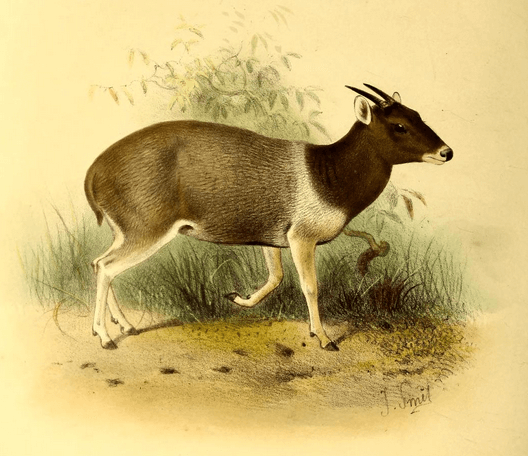Facts About Jentink's duiker
Jentink's duiker, also known as "gidi-gidi" in Krio and "kaikulowulei" in Mende, is a sizable, forest-dwelling antelope found in southern Liberia, southwestern Côte d'Ivoire, and parts of Sierra Leone. Named after the zoologist Fredericus Anna Jentink, this species is distinguished as the largest among duikers. They measure about 80 centimeters tall at the shoulder and weigh around 70 kilograms. Their fur is a distinctive blend of gray and black, accented with a white band across the shoulders, and they sport long, slender horns.
These duikers thrive in dense rainforests, where they feed on a variety of foods including fallen fruits, flowers, leaves, seedlings, and roots. They also have a preference for cultivated crops such as palm nuts, mangos, and cocoa pods. Nocturnal by nature, Jentink's duikers are territorial and prefer to hide in thick underbrush during daylight hours. While they can run swiftly, they tend to tire quickly when startled.
First discovered in 1884 and formally described in 1892, sightings of Jentink's duikers have been rare since the 1960s. Their conservation status has been precarious due to habitat loss and hunting for bushmeat, both of which pose significant threats to their survival.
Taxonomically, Jentink's duiker belongs to the genus Cephalophus and the family Bovidae. The species was first described by Oldfield Thomas in 1892. A study in 2001 classified it as a "giant duiker" grouping it with other large duiker species. Recent phylogenetic research has illuminated the evolutionary relationships within the Cephalophinae subfamily, enhancing our understanding of Jentink's duiker and its close relatives.

 Sierra Leone
Sierra Leone